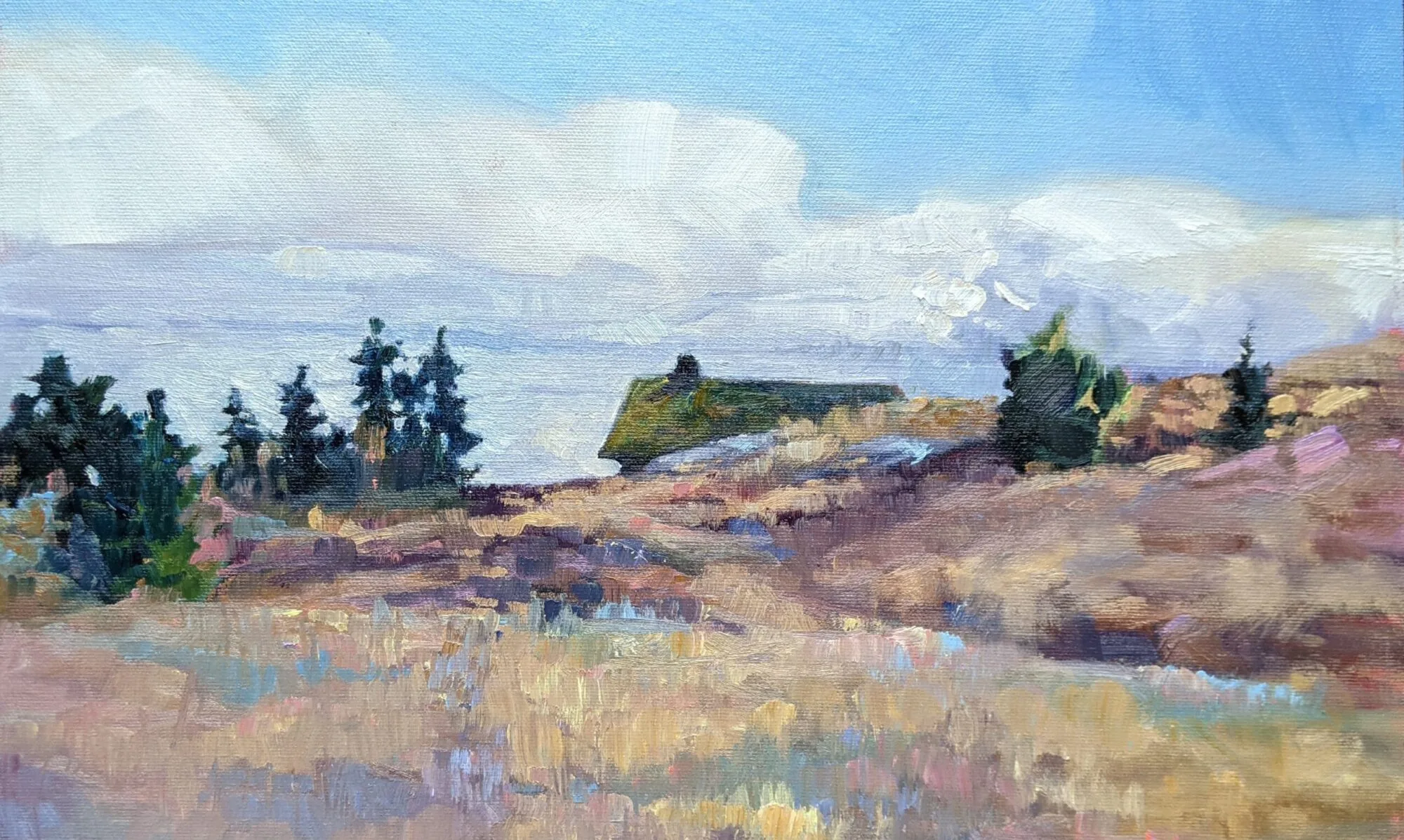When I was younger, my dream job was to be a New York City cabbie. At that time, there was no GPS, so cabbies had to learn the city by heart. Driving in the city was like rolling around in a giant pinball game, and it was fun. Either Maine or old age has softened me up. Coming into Queens on Friday night, I found myself taking the innumerable small rudenesses personally, instead of answering them in the spirit in which they were intended.
In Queens the traffic problem is exacerbated because there’s no way off Long Island except through New York City. There have been Long Island Sound bridges and tunnels proposed since the 1950s, but they never get built. I’m not sure a bridge would do much except allow the metropolis to slop further out of its jar. It sure would change the view.

Brad Marshall and his painting.
Long Island Sound is an estuary. That makes it an important feeding, breeding and nursery area for migratory fish and birds. It is also among the earliest and most densely settled areas in the United States. Somehow that tension between 400 years of human habitation and nature works to make it a very beautiful place.
I went to Rye intending to paint boats, which are one of my favorite subjects. The American Yacht Club has an anemometer, and on Sunday, winds were gusting up to 45 mph. My canvas would have made a nice little sail that sent my easel flying into the Sound. Instead, Brad Marshall and I hunkered down in the lee of the building, giving us a view of the beach and its riprap breakwater but, sadly, no boats. Still, we both managed to turn out credible compositions.
Between painting and the reception, artists mostly want to stay out of the way. Luckily, the yacht club has a great selection of art, including a terrific model of the America and a lovely painting of tugs by Canadian maritime painter Jack L. Gray. We pottered about peering at things and were very happy.
At the reception, a couple told me that my painting reminded them of the Group of Seven. Tom Thomson and the Group of Seven are my artistic ideal; I think and write about them frequently. It turns out that my new friends are Canadian, and know my home town of Buffalo very well. My painting went home with them and I headed back north, grateful to be driving gently once again.







































